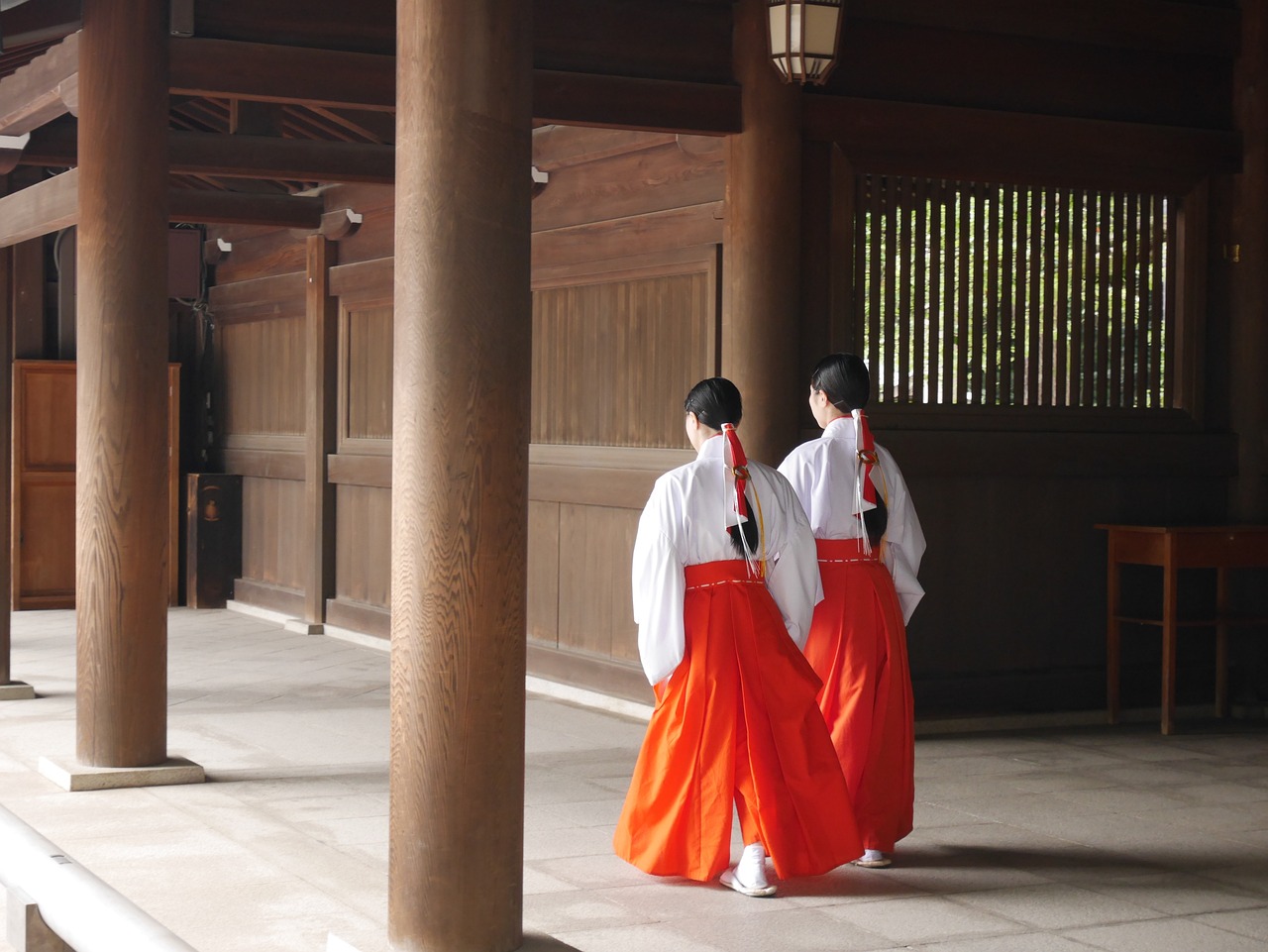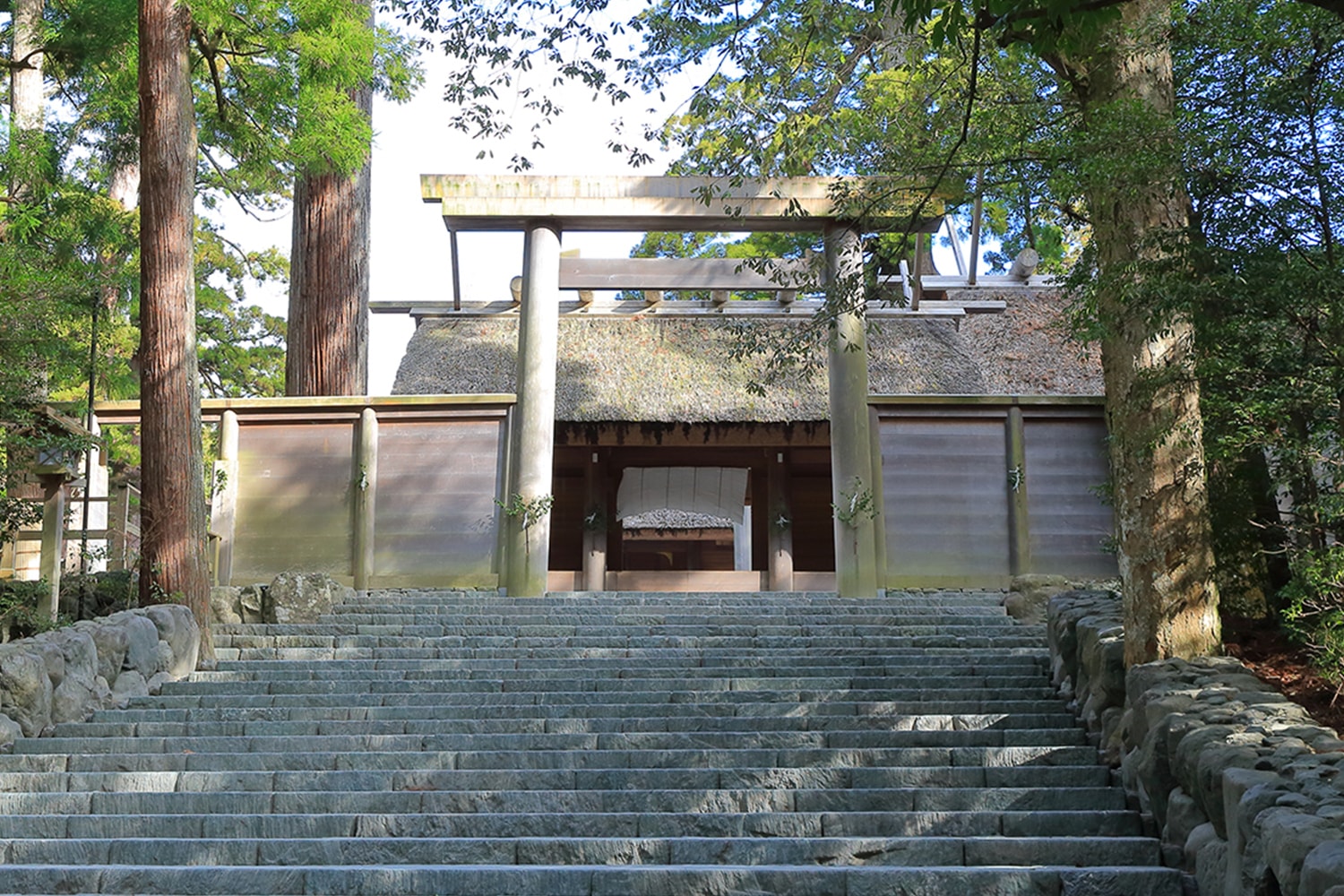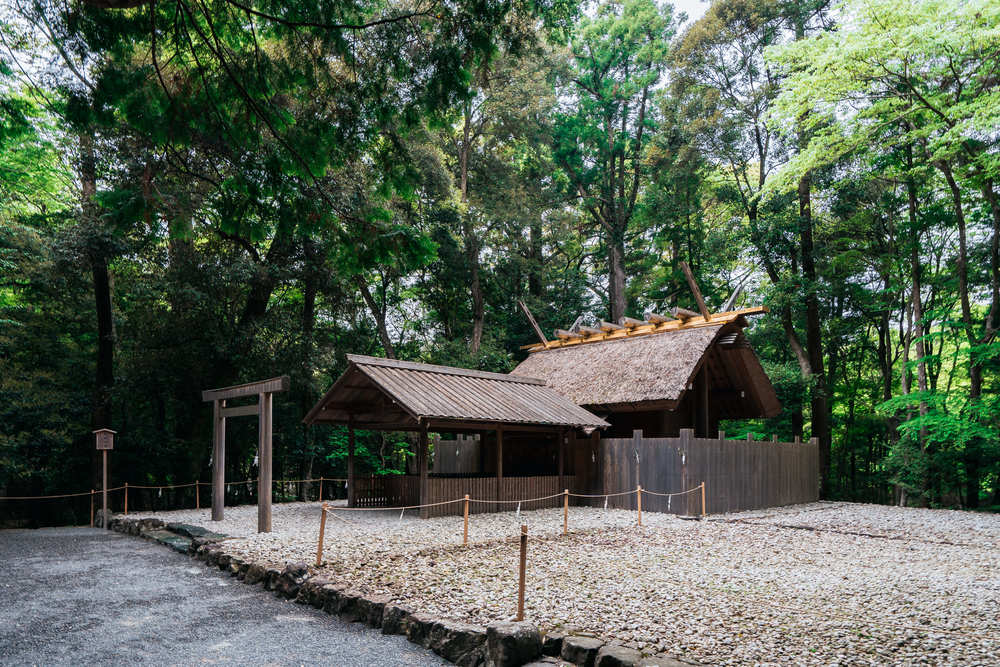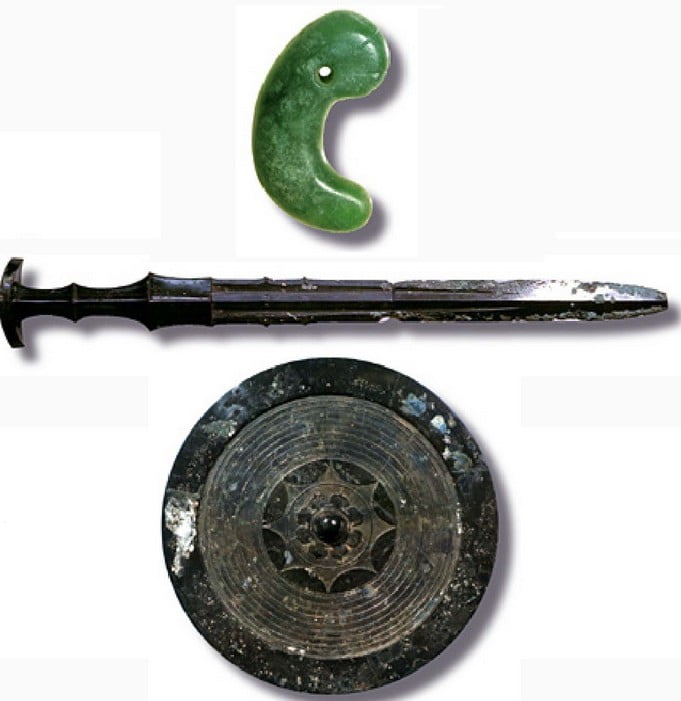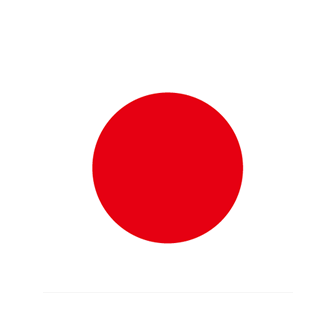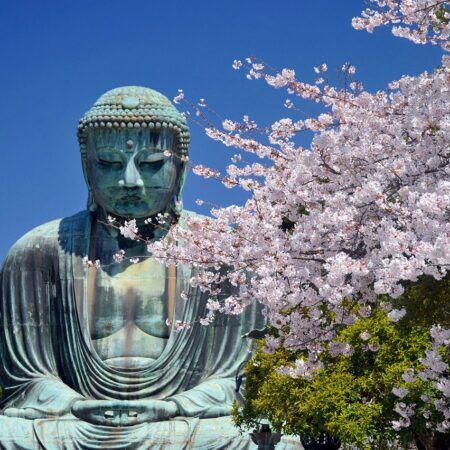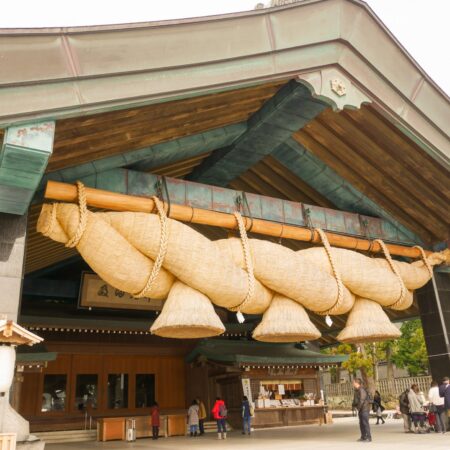Hello everyone, have you ever visited Ise Grand Shrine? Ise Grand Shrine, located in Ise City, Mie Prefecture, is a shrine that boasts the highest level of sacredness in Japan and is a place visited by many worshippers from both within and outside the country. Among the shrines in Japan, Ise Grand Shrine holds the highest rank and is famous for enshrining Amaterasu Omikami, the goddess of the sun and the universe in Japanese mythology. However, do you know the history of Ise Grand Shrine? And did you know that it is rebuilt every 20 years? This time, I will introduce the history, highlights, and interesting facts about Ise Grand Shrine, the most prestigious shrine in Japan.
What is Ise Grand Shrine?
Let's start by explaining what kind of shrine Ise Grand Shrine is. Ise Grand Shrine refers to a collection of shrines, primarily consisting of the Inner Shrine (Kotai Jingu) and the Outer Shrine (Toyo'uke Daijingu), along with numerous other associated shrines (betsugu), auxiliary shrines (sessha), subordinate shrines (matsuri-sha), and administrative shrines (shokan-sha) scattered around Ise City and its surroundings. The Inner Shrine enshrines Amaterasu Omikami, the supreme deity in Japanese mythology and the ancestor of the Imperial family, while the Outer Shrine enshrines Toyo'uke Omikami. The term Ise Grand Shrine is often used to refer to this extensive group of 125 shrines. Amaterasu Omikami is the sun goddess, and according to the "Kojiki," she was born from the left eye of Izanagi when he purified himself after returning from the Land of the Dead. This sacred place has been considered the spiritual center of the Japanese people throughout its long history, attracting many worshippers.
The History of Ise Grand Shrine
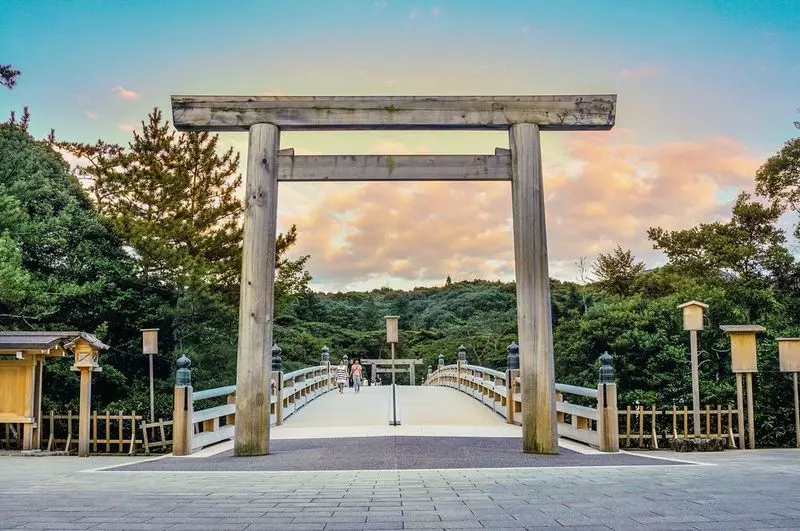
The history of Ise Grand Shrine is deeply connected with Amaterasu Omikami. So, who exactly is Amaterasu Omikami?
(Image Citation: aumo)
Amaterasu Omikami
Amaterasu Omikami is one of the three deities who first appeared in the chaotic universe of ancient times. She is one of the most important deities in Japanese mythology and is considered the goddess of the sun. Amaterasu symbolizes cosmic order, life, and prosperity, making her a special figure for many Japanese people. She resides in Takamagahara (the heavenly realm where gods dwell), representing the sun itself that illuminates everything and nurtures life. Amaterasu Omikami is a deity involved in the creation of Japan.
Amaterasu Omikami is also deeply connected to the Japanese imperial family and is revered as their ancestral deity. According to mythology, during the descent of the heavenly grandson, her grandson Ninigi-no-Mikoto descended to earth, marking the beginning of the Japanese imperial lineage.
The Relationship Between Amaterasu Omikami and Ise Grand Shrine
Ise Grand Shrine was established around 2,000 years ago. Initially, Amaterasu Omikami was enshrined near the Emperor during the descent of the heavenly grandson. However, during the reign of Emperor Sujin, the 10th emperor, he felt it was daunting to worship Amaterasu Omikami in the same place as the imperial palace, leading to her relocation. This significant task was entrusted to Princess Yamatohime-no-Mikoto. She erected a sacred site in Kasanui-mura in Yamato and enshrined Amaterasu Omikami there.
Later, during the reign of Emperor Suinin, the 11th emperor, a new princess, Yamatohime-no-Mikoto, took over the task of finding a permanent place to enshrine Amaterasu Omikami. She embarked on a journey from the Yamato province, passing through Iga, Omi, and Mino, finally reaching the province of Ise. "This wind-swept land of Ise is a beautiful place. Here I shall stay," said Amaterasu Omikami. Thus, Yamatohime-no-Mikoto built a shrine upstream of the Isuzu River, establishing Ise as the eternal dwelling place of Amaterasu Omikami.
This sacred place, Ise Grand Shrine, had a system known as "Shihei-Kindan," which prohibited anyone other than the Emperor from offering sacred offerings. Despite this, the shrine's existence and sanctity gradually spread among the common people, leading many to visit for worship. During the Kamakura period, it was recorded that countless pilgrims visited Ise Grand Shrine, making it a beloved place for many people.
Supporting the faith in Ise Grand Shrine were people known as "Oshi." They played the role of mediating people's wishes to the gods, having parishioners spread throughout the country. They distributed talismans, conducted prayers, guided pilgrims, and performed sacred music, significantly contributing to the reverence for the shrine. Due to the influence of these Oshi, pilgrimages to Ise became particularly popular during the Edo period. In a peaceful era without conflicts, people had the spiritual capacity to believe in gods, and the well-developed transportation network made it easier to travel to Mie than before.
In the Meiji era, the Oshi system was abolished, but the reverence for Ise Grand Shrine remained unchanged. Even today, many people from all over Japan and the world visit to offer prayers at this sacred place. With a history spanning over two thousand years, Ise Grand Shrine continues to captivate many hearts with its mystical beauty and deep faith.
Highlights of Ise Grand Shrine
Ise Grand Shrine is divided into two main parts: the Inner Shrine and the Outer Shrine.
Inner Shrine (Naiku)
Main Shrine: Kotai Jingu
The Inner Shrine, Kotai Jingu, enshrines Amaterasu Omikami, the guardian deity of the nation and the ancestral deity of the Imperial family. About 2,000 years ago, the Emperor began to enshrine the Yata-no-Kagami, the sacred mirror, as the divine object of Amaterasu Omikami in Ise, which led to the spread of Ise faith throughout Japan. The birth and sanctity of Amaterasu Omikami, as recorded in the "Nihon Shoki" (Chronicles of Japan), highlight the importance of Kotai Jingu.
The main highlight of Kotai Jingu is the sacred Yata-no-Kagami, and the holy space where it is enshrined. The reverence for Amaterasu Omikami occupies a special position not only in the imperial court but also as the main sanctuary of shrines throughout the country. For many people, visiting Ise Grand Shrine holds a special significance. Kotai Jingu is located in a natural setting at the foot of Mount Kamiji and Mount Shimaji, by the Isuzu River. This rich natural environment enhances the sanctity of Amaterasu Omikami, bringing a sense of tranquility and holiness to visitors.
Furthermore, Kotai Jingu is associated with the "Divine Decree of Eternal Reign," symbolizing the eternal prosperity and peace of the nation. The story of why Yamatohime-no-Mikoto chose Ise as the site and the tradition of the Shikinen Sengu (rebuilding of the shrine every 20 years) deepen the sanctity and importance of Kotai Jingu.
(Image Citation: 伊勢神宮HP)
Aramatsuri-no-Miya
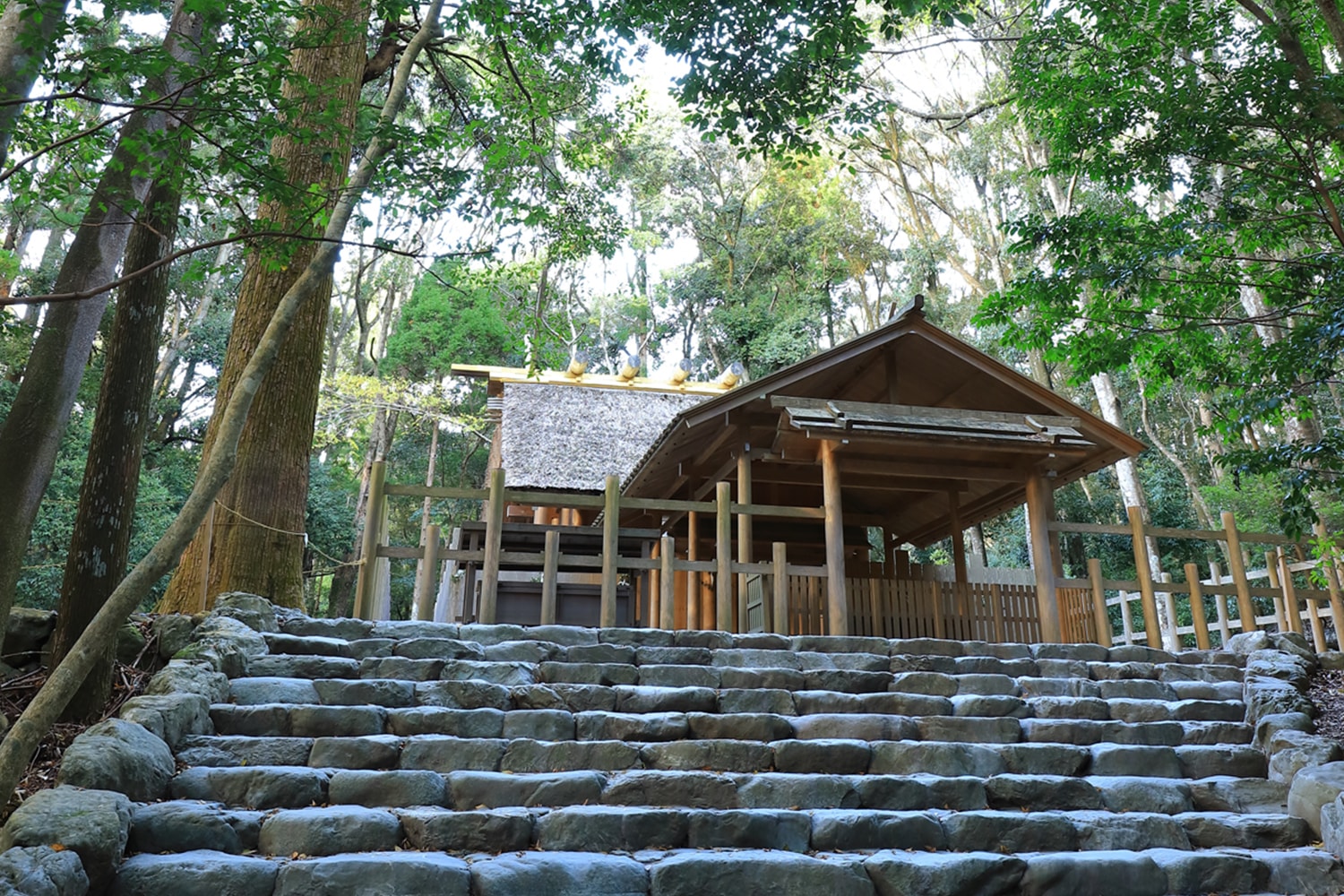
In addition to the main shrines of the Inner and Outer Shrines, Ise Grand Shrine has ten auxiliary shrines, known as "Betsugu." Among these, Aramatsuri-no-Miya holds a particularly important position. This auxiliary shrine is ranked first among the auxiliary shrines belonging to the Inner Shrine, and its sanctuary is second in size only to the main shrine.
The deity enshrined at Aramatsuri-no-Miya is the aramitama (rough spirit) of Amaterasu Omikami, symbolizing her divine power and active aspect. In Shinto, the gentle workings of a deity's spirit are called "nigimitama," while the powerful and forceful aspects are referred to as "aramitama." By enshrining the aramitama, Aramatsuri-no-Miya venerates the rich power, vitality, and the dynamic influence that Amaterasu Omikami exerts on nature and the lives of people.
(Image Citation: 伊勢神宮公式HP)
Uji Bridge and Isuzu River
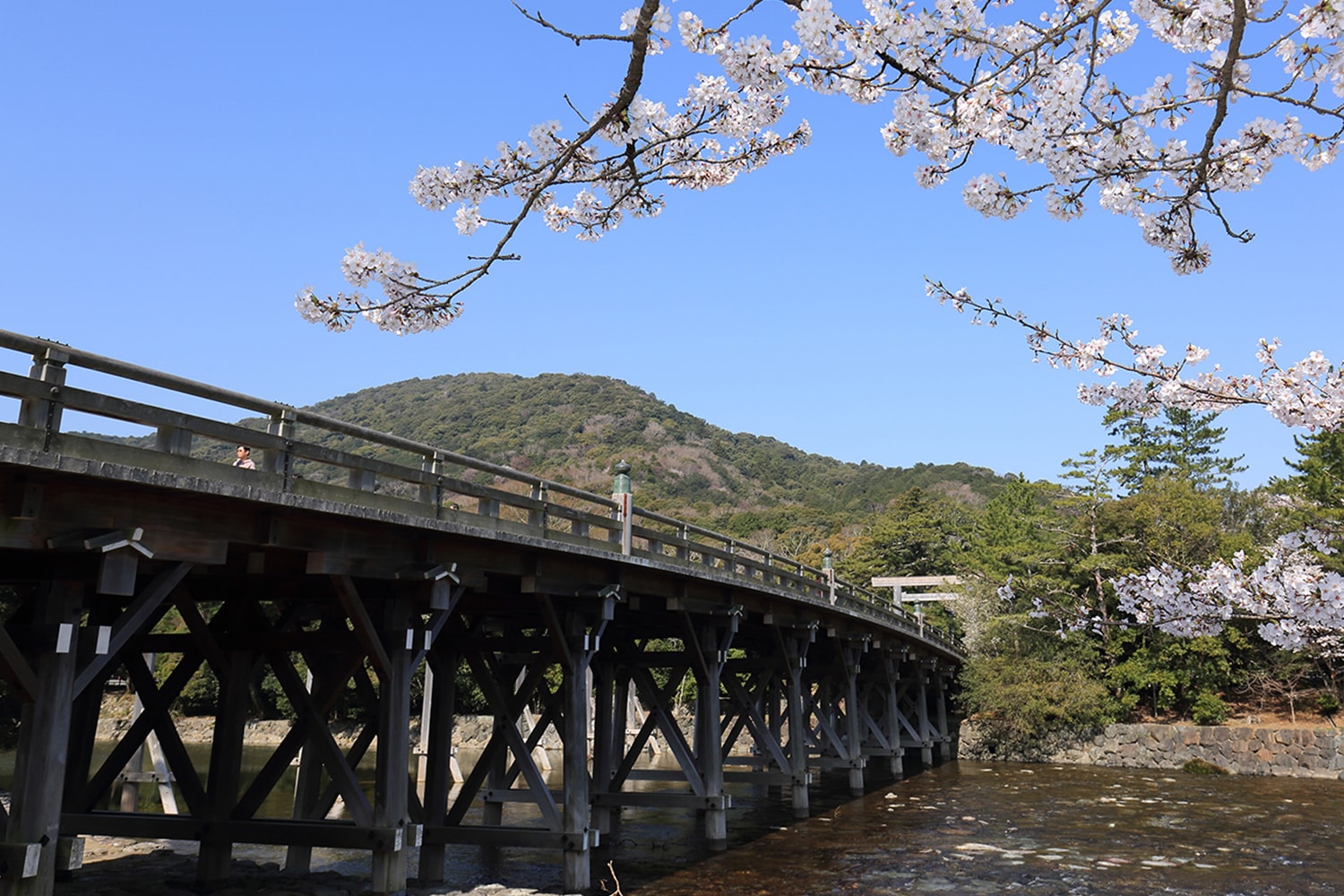
Uji Bridge at Ise Grand Shrine serves as a sacred entrance and stands as a symbolic gateway welcoming worshippers. This beautiful arched bridge, spanning 101.8 meters in length and 8.4 meters in width, is renowned for its traditional Japanese design. Particularly striking are the 16 giboshi (ornamental caps) adorning the railings, which enhance the unique beauty of Uji Bridge.
Traditional Japanese building materials are used in the construction of Uji Bridge. The floorboards and railings are made of fragrant hinoki (cypress), with its soft hues and grain imparting warmth to the bridge. The bridge piers, on the other hand, are made of durable zelkova wood, chosen for its strength and resistance to water, ensuring the bridge withstands the harsh natural environment over the years. Thus, Uji Bridge combines beauty and practicality.
Uji Bridge spans the path leading to Ise Grand Shrine, symbolizing the beginning of the pilgrimage. Crossing this bridge, worshippers leave the ordinary world behind and step into the sacred realm. The view from the bridge changes with the seasons, and the harmony between the bridge and the natural beauty has inspired many visitors.
(Image Citation: 伊勢神宮公式HP)
Isuzubashi Bridge
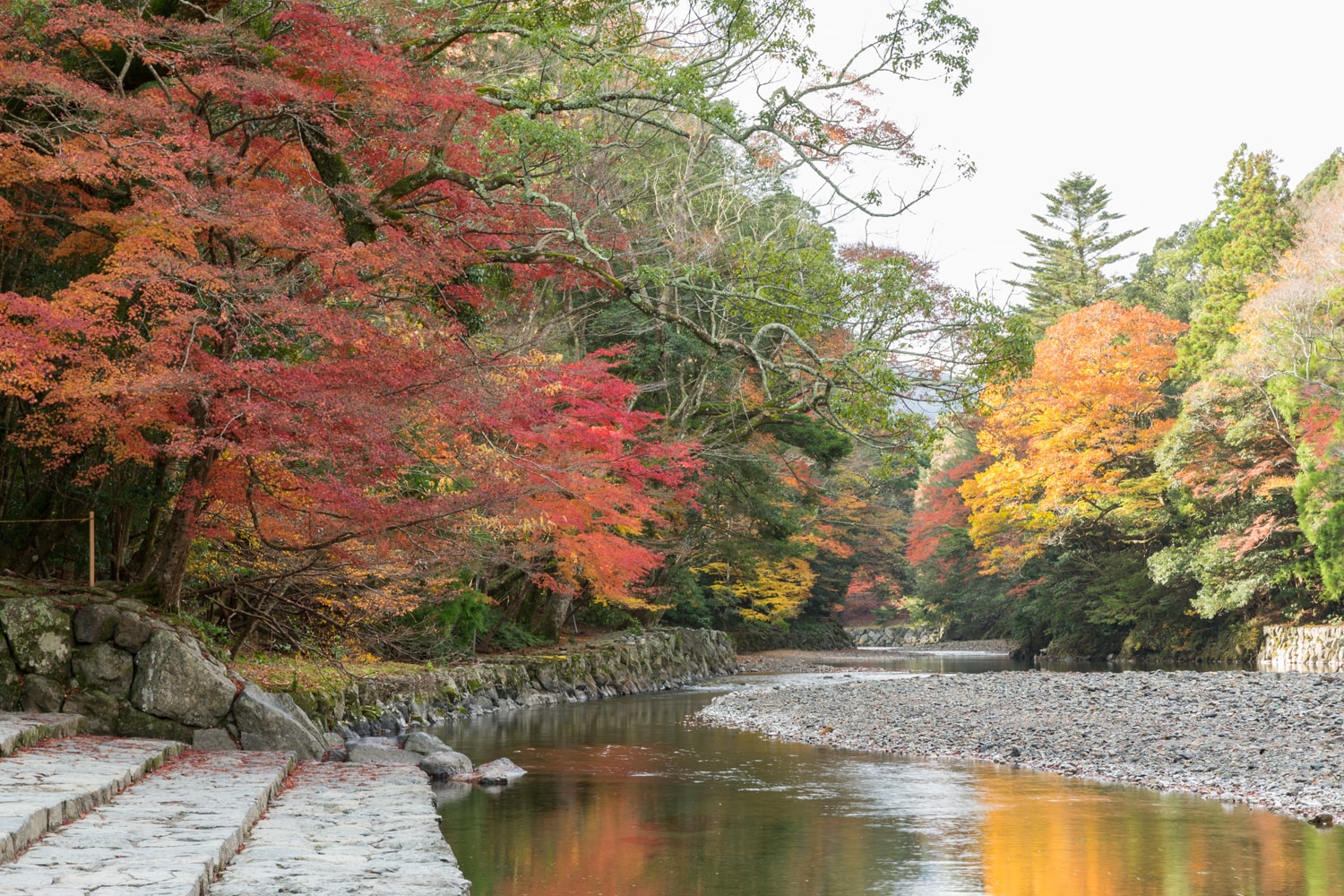
The Isuzu River, which flows through the precincts of Ise Grand Shrine, is a special place for visitors due to its pure water and historical significance. Also known as "Mimorogawa," this river is associated with the legend of Princess Yamatohime-no-Mikoto, who is said to have washed the hem of her garment in its waters. The beautiful Isuzu River is formed by the confluence of the Kamiji River, originating from Mount Kamiji, and the Shimoji River, originating from Mount Shimoji.
Along the approach to the Inner Shrine, there is a "Mitarashi" (purification site) where visitors purify their bodies and minds before entering the sacred space. This site functions as a chozuya (ablution pavilion) where worshippers use the pure water of the Isuzu River for cleansing. The surroundings of the Mitarashi are beautifully paved with stones, donated by Keisho-in, the mother of Tokugawa Tsunayoshi, in the fifth year of Genroku (1692), adding historical value to the area.
The Isuzu River and the Mitarashi play essential roles in the pilgrimage experience at Ise Grand Shrine. The river’s clear flow and the purification ritual at the Mitarashi prepare visitors mentally and physically for entering the sacred space. When visiting Ise Grand Shrine, it is traditional to cleanse both body and mind with the water of the Isuzu River, showing respect to the deities. This experience provides a valuable opportunity to connect with the solemn atmosphere of Ise Grand Shrine and the teachings of Shinto.
(Image Citation: 伊勢神宮公式HP)
Outer Shrine (Geku)
Kazahinomi-no-Miya
Kazahinomi-no-Miya, located in the Inner Shrine (Naiku) of Ise Grand Shrine, enshrines the deities Shinatsuhiko-no-Mikoto and Shinatobe-no-Mikoto, who govern wind and rain. These deities play a crucial role in Japanese agriculture, as they are responsible for the wind and rain essential for farming. This shrine is dedicated to praying for the abundance of crops, especially the five grains, and to preventing disasters caused by wind and rain.
A significant highlight of Kazahinomi-no-Miya is the annual Kazahinomi Festival, a ritual associated with wind and rain. This important event, held twice a year on May 14th and August 4th, prays for a bountiful harvest and protection from wind and rain disasters. The beautiful scenery of fresh green leaves and autumn foliage seen from Kazahinomi-no-Miya Bridge enhances the natural beauty of the shrine, providing visitors with a sense of tranquility.
Historical records such as the "Kotaijingu Gishiki-cho" and "Engishiki" detail the long history and evolution of Kazahinomi-no-Miya. Originally called "Kazajinsha," this shrine received its current name, Kazahinomi-no-Miya, following a miraculous event during the Mongol invasions. It is said that a divine wind, invoked by the gods, destroyed the enemy fleet, saving the nation from unprecedented peril. Over time, the format of the rituals has evolved, leading to the current biannual Kazahinomi Festival. However, the core purpose of these rituals remains unchanged, continuing to honor and invoke the deities' blessings.
(Image Citation: 伊勢市観光協会公式HP)
Shikinen Sengu
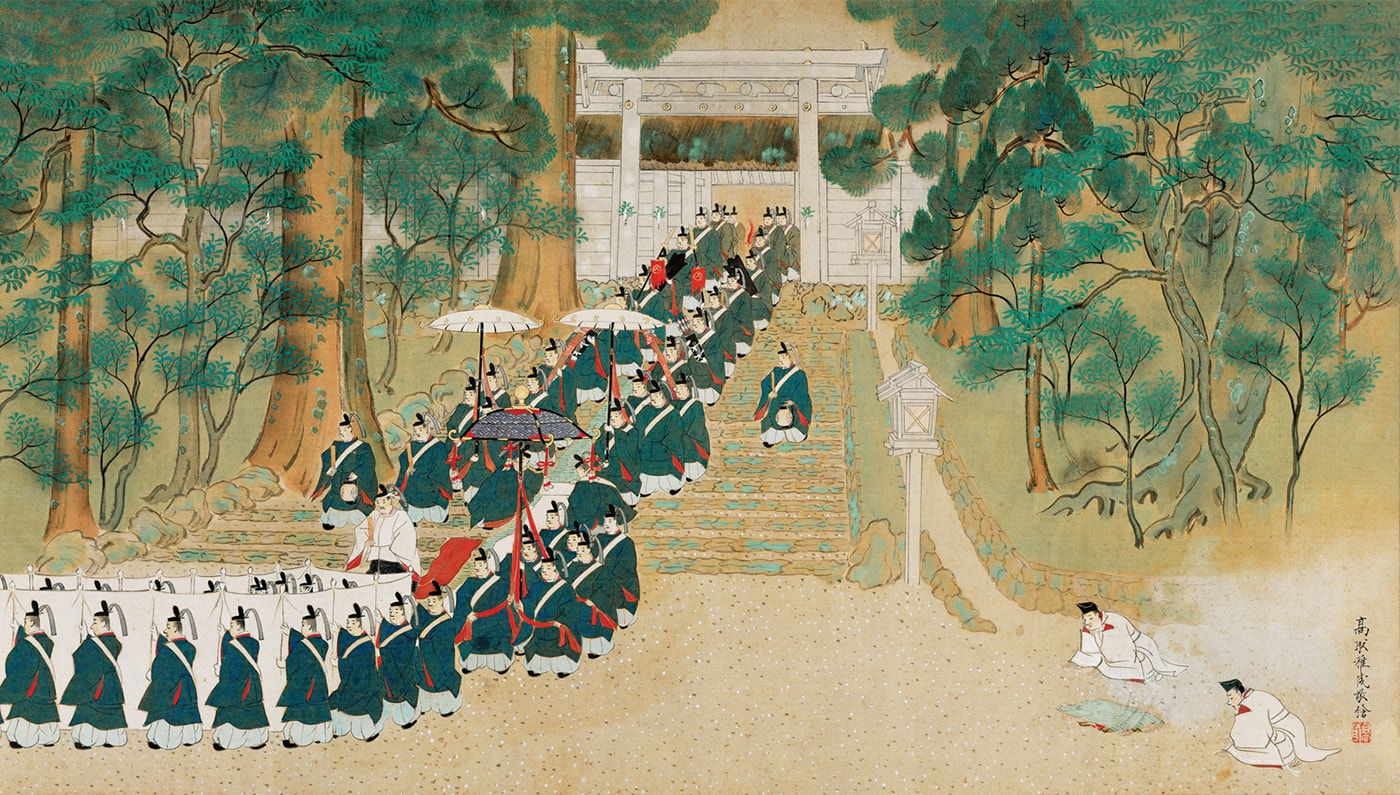
The Shikinen Sengu of Ise Grand Shrine is the most significant ceremony in the entire shrine complex, including the Inner Shrine (Kotai Jingu) and the Outer Shrine (Toyo'uke Daijingu). Held once every 20 years, this ritual involves rebuilding the shrine buildings and transferring the deities to newly constructed shrines. This tradition has been maintained for approximately 1,300 years, symbolizing the continuity, inheritance, and eternal renewal of the shrine. The primary significance of Shikinen Sengu lies in the practice of continually enshrining the deity in a fresh and pure environment, thus perpetuating the unchanging sacred rites.
The origin of Shikinen Sengu dates back to the initiative of Emperor Tenmu, with the first Sengu taking place at the Inner Shrine in the 4th year of Empress Jito's reign (690 AD), followed by the Outer Shrine two years later. Despite temporary interruptions throughout history, this tradition has persisted, with the 62nd Shikinen Sengu being conducted in 2013, adhering to ancient customs.
In its early form, Ise Grand Shrine did not consist of the grand structures seen today. Instead, temporary sacred sites called Himorogi and Hokora were established to worship Amaterasu Omikami. These makeshift facilities were created anew for each festival, serving as temporary sacred places. The evolution of these simple forms into more permanent shrines began with the establishment of Shikinen Sengu, initiated by Emperor Tenmu and realized during Empress Jito's reign.
(Image Citation: 伊勢神宮公式HP)
Trivia about Ise Grand Shrine
The Reason Why Ise Grand Shrine is Divided into the Inner Shrine and the Outer Shrine
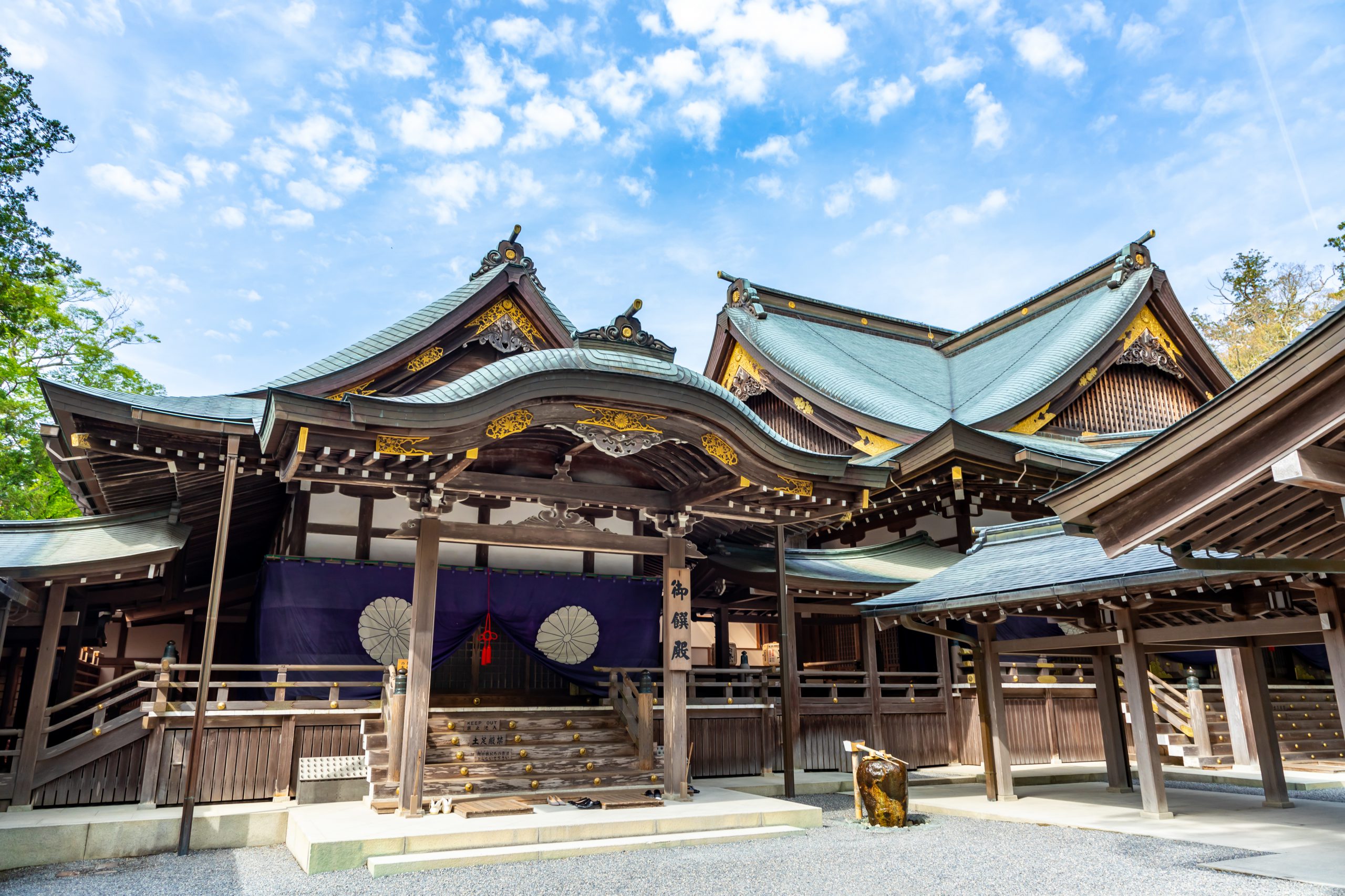
伊勢神宮の内宮と外宮の名称は、深い歴史的背景と意味を持っています。内宮、すなわち皇大神宮は、天照大御神を祀っており、この神は日本神話において最も尊い存在であり、皇室の祖先神とされています。このため、「内」の字が使われ、天皇や皇室に関連するものとしての意味合いが強いです。古代の朝廷では、天皇の居住する宮殿を「内裏」と呼び、これが「内なるもの」という意味を持つことから、天照大御神を祀る皇大神宮を「内宮」と呼ぶようになったとされています。
一方で、外宮は豊受大御神を祀る場所であり、「外」という名称は、内裏の外、すなわち離宮を指す言葉から来ていると考えられています。内宮が天皇を象徴する「内なる宮」であるのに対し、外宮はそれに付随する形で「外なる宮」として位置づけられたというわけです。このように、伊勢神宮の内宮と外宮の名称は、それぞれが持つ祭神の重要性と、皇室との関連性を反映していると言えるでしょう。
(Image Citation: Let`s SEE JAPAN)
Ise Grand Shrine Does Not Have Omikuji
Ise Grand Shrine holds a particularly high status among Japanese shrines and is a sacred place that many people aspire to visit at least once in their lifetime. Unlike most other shrines, Ise Grand Shrine does not have "omikuji" (fortune-telling paper strips). The reasoning behind this is that the act of visiting the shrine itself is considered a significant blessing, making it unnecessary to predict good or bad fortune separately.
Pilgrimage to Ise, known as "O-Ise-Mairi," has long held special significance for Japanese people, and visiting Ise Grand Shrine is seen as a major event in one's life. It is generally believed that simply making the pilgrimage brings great fortune ("daikichi"), and thus there is no need for further fortune-telling. The deep respect and faith in the deities of Ise Grand Shrine imply that the act of worship itself is the highest blessing, allowing worshippers to receive the gods' blessings directly without relying on omikuji.
Furthermore, the faith and rituals of Ise Grand Shrine are rooted in ancient traditions. Its sacred environment and solemn atmosphere encourage introspection and spiritual purification among visitors. In such a setting, formal fortune-telling like omikuji is considered a cultural practice that differs from the shrine's sacredness.
Right-Side Walking at the Inner Shrine, Left-Side Walking at the Outer Shrine
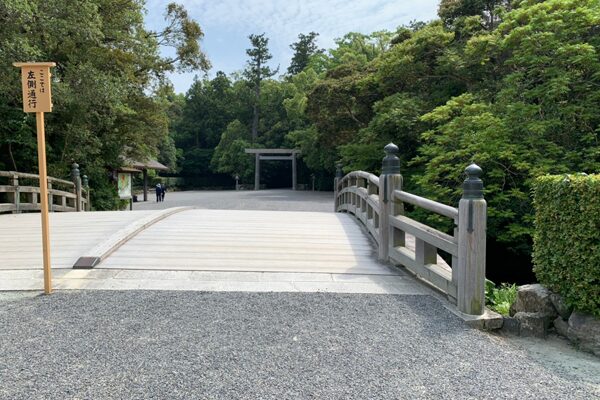
The reason for the different walking rules on the paths of the Inner Shrine (Naiku) and Outer Shrine (Geku) of Ise Grand Shrine is based on their structure and sacred etiquette. In the Inner Shrine, the main sanctuary is located on the left side of the approach path. Worshippers walk on the right side to show respect for the sacred area, keeping a greater distance from the main sanctuary. This custom has established right-side walking as the norm in the Inner Shrine.
Conversely, in the Outer Shrine, the main sanctuary is on the right side of the approach path, so worshippers walk on the left side. This practice is rooted in the traditional belief that worshippers should walk further away from the sacred main sanctuary, maintaining a humble heart.
Additionally, the locations of the ablution pavilions (temizuya) and purification sites (mitarashi) for cleansing the body and mind before worship are also placed on the right side in the Inner Shrine and on the left side in the Outer Shrine. This arrangement ensures a smooth flow that aligns with the walking rules and helps prepare worshippers for entering the sacred area.
(Image Citation: THY GUEST HOUSE EST 2020)
Why Do Worshippers Visit the Outer Shrine First at Ise Grand Shrine?
The custom of visiting the Outer Shrine (Geku) first at Ise Grand Shrine originates from the traditional ritual order known as "Geku-saki-matsuri." In this ritual, ceremonies are first conducted at the Outer Shrine and then at the Inner Shrine (Naiku). This order is based on the belief that Toyo'uke Omikami, enshrined at the Outer Shrine, is the food deity who prepares meals for Amaterasu Omikami, enshrined at the Inner Shrine. Hence, it is customary to offer food to Toyo'uke Omikami first at the Outer Shrine before proceeding with the ceremonies at the Inner Shrine.
Following this ritual order, it has become a common practice for worshippers to visit the Outer Shrine before the Inner Shrine when visiting Ise Grand Shrine. This custom demonstrates respect for the deities and preserves the sacred sequence of rituals, allowing worshippers to feel a sense of participation in the holy ceremonies.
Additionally, during the Edo period, there was a popular route called "Hama-miya," where pilgrims purified themselves at Futamiura before heading to Ise Grand Shrine. This tradition, aimed at showing respect to the shrine and cleansing oneself, still sees visitors today. It serves to deepen the spiritual experience of visiting Ise Grand Shrine. Thus, visiting Ise Grand Shrine involves more than just visiting a shrine; it is a meaningful act of preparing oneself spiritually and mentally to enter the sacred space.
The Sacred Object at the Inner Shrine of Ise Grand Shrine is the Yata-no-Kagami
At the Inner Shrine (Naiku) of Ise Grand Shrine, the Yata-no-Kagami, one of the Three Sacred Treasures of Japan, is enshrined as the sacred object. The Three Sacred Treasures, consisting of the Yata-no-Kagami (mirror), the Kusanagi-no-Tsurugi (sword), and the Yasakani-no-Magatama (jewel), are the most sacred heirlooms passed down through the Japanese Imperial family.
The Yata-no-Kagami is a sacred mirror used by Amaterasu Omikami, the sun goddess, during the mythological event of her hiding in the rock cave (Ame-no-Iwato). This mirror was later handed down from Amaterasu Omikami to her grandson, Ninigi-no-Mikoto, and then to his descendant, Emperor Jimmu, the first emperor of Japan. The mirror signifies the legitimacy of imperial succession and holds immense significance for the Imperial family.
The Yata-no-Kagami's enshrinement at the Inner Shrine underscores its profound importance as a symbol of the emperor's divine right to rule and the continuity of the Imperial lineage.
(Image Citation:伊勢神宮・ご朱印)
The Identity of the White Cloth at the Worship Areas of Ise Grand Shrine
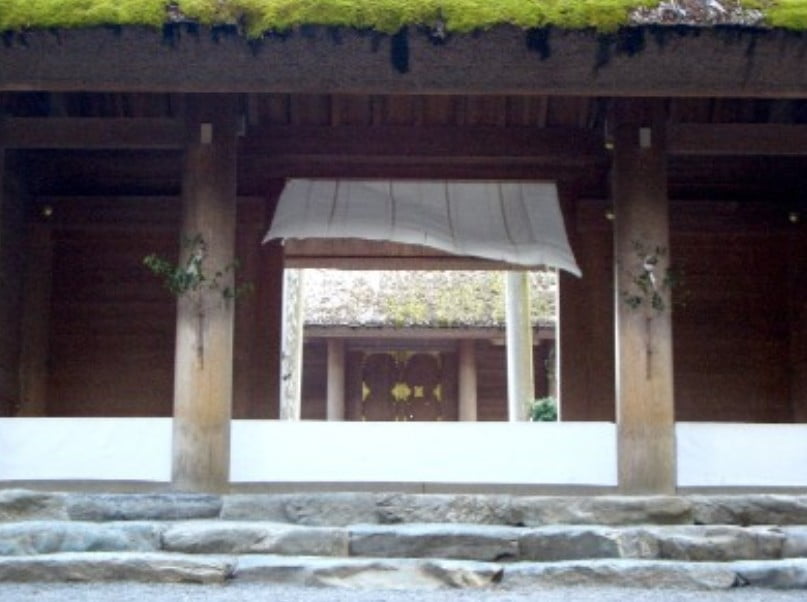
The white cloths seen at the worship areas of Ise Grand Shrine are called "Gohō." These cloths are used to protect and maintain the sanctity of the sacred space. The main shrines of Ise Grand Shrine are surrounded by four layers of fences to show respect and preserve their sacredness. The Gohō serves to conceal the most sacred space, ensuring that the main shrines are not directly visible when the gates are open.
Additionally, fences called "Ibarabei" stand outside the entrances, serving a similar purpose to the Gohō. These fences separate the sacred space from the outside and protect the purity and tranquility of the inner area. In the Inner Shrine (Naiku), the Ibarabei fences are positioned at various locations, including at the bottom of the stone steps in the east, west, south, and north, creating a space for visitors to calm their minds and adopt a reflective attitude before entering the sacred area.
(Image Citation: 伊勢神宮・ご朱印)
Summary
How was it? We have introduced the history, highlights, Shikinen Sengu, and trivia about Ise Grand Shrine. As a grand shrine dedicated to Amaterasu Omikami, it offers numerous points of interest. Visiting with this historical and cultural knowledge will allow you to enjoy Ise Grand Shrine from a different perspective.
Our website also introduces Japanese history and culture, including Ise Grand Shrine. If you are interested, we would be delighted if you read our other articles as well!
